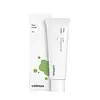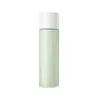What's inside
What's inside
 Key Ingredients
Key Ingredients

 Benefits
Benefits

 Concerns
Concerns

 Ingredients Side-by-side
Ingredients Side-by-side

Morinda Citrifolia Fruit Extract 57%
Skin ConditioningWater
Skin ConditioningGlycerin
HumectantMethylpropanediol
SolventHydrogenated Polydecene
EmollientMethyl Trimethicone
Skin ConditioningNeopentyl Glycol Diheptanoate
Emollient1,2-Hexanediol
Skin ConditioningNiacinamide
SmoothingButyrospermum Parkii Butter
Skin ConditioningTrehalose
HumectantCaprylic/Capric Triglyceride
MaskingPolyglyceryl-3 Methylglucose Distearate
EmulsifyingDimethicone
EmollientCetyl Alcohol
EmollientGlyceryl Stearate Se
EmulsifyingAzadirachta Indica Seed Oil
Skin ConditioningButylene Glycol
HumectantDipropylene Glycol
HumectantEclipta Prostrata Leaf Extract
Skin ConditioningLaminaria Japonica Extract
Skin ProtectingBehenyl Alcohol
EmollientHydrogenated Lecithin
EmulsifyingCetearyl Alcohol
EmollientEthylhexylglycerin
Skin ConditioningPolyglyceryl-10 Myristate
Skin ConditioningRosmarinus Officinalis Leaf Oil
MaskingMelia Azadirachta Leaf Extract
Skin ConditioningPropanediol
SolventAdenosine
Skin ConditioningFructooligosaccharides
HumectantSodium Stearoyl Glutamate
CleansingMalt Extract
Skin ProtectingBeta-Glucan
Skin ConditioningCholesterol
EmollientMelia Azadirachta Flower Extract
Skin ConditioningCarbomer
Emulsion StabilisingSodium Hyaluronate
HumectantTromethamine
BufferingAcmella Oleracea Extract
Skin ProtectingHydrolyzed Hyaluronic Acid
HumectantCeramide NP
Skin ConditioningPalmitic Acid
EmollientFicus Carica Fruit Extract
HumectantCentella Asiatica Extract
CleansingStearic Acid
CleansingArginine
MaskingTocopherol
AntioxidantMyristic Acid
CleansingPhenoxyethanol
PreservativeAloe Ferox Leaf Extract
Skin ConditioningAlthaea Rosea Flower Extract
Skin ConditioningMorinda Citrifolia Fruit Extract 57%, Water, Glycerin, Methylpropanediol, Hydrogenated Polydecene, Methyl Trimethicone, Neopentyl Glycol Diheptanoate, 1,2-Hexanediol, Niacinamide, Butyrospermum Parkii Butter, Trehalose, Caprylic/Capric Triglyceride, Polyglyceryl-3 Methylglucose Distearate, Dimethicone, Cetyl Alcohol, Glyceryl Stearate Se, Azadirachta Indica Seed Oil, Butylene Glycol, Dipropylene Glycol, Eclipta Prostrata Leaf Extract, Laminaria Japonica Extract, Behenyl Alcohol, Hydrogenated Lecithin, Cetearyl Alcohol, Ethylhexylglycerin, Polyglyceryl-10 Myristate, Rosmarinus Officinalis Leaf Oil, Melia Azadirachta Leaf Extract, Propanediol, Adenosine, Fructooligosaccharides, Sodium Stearoyl Glutamate, Malt Extract, Beta-Glucan, Cholesterol, Melia Azadirachta Flower Extract, Carbomer, Sodium Hyaluronate, Tromethamine, Acmella Oleracea Extract, Hydrolyzed Hyaluronic Acid, Ceramide NP, Palmitic Acid, Ficus Carica Fruit Extract, Centella Asiatica Extract, Stearic Acid, Arginine, Tocopherol, Myristic Acid, Phenoxyethanol, Aloe Ferox Leaf Extract, Althaea Rosea Flower Extract
Morinda Citrifolia Fruit Extract 42.75%
Skin ConditioningWater
Skin ConditioningCoco-Caprylate/Caprate
EmollientDipropylene Glycol
HumectantGlycerin
HumectantButylene Glycol
HumectantArachidyl Alcohol
EmollientSodium Hyaluronate
HumectantHydrolyzed Hyaluronic Acid
HumectantSodium Acetylated Hyaluronate
HumectantMorinda Citrifolia Seed Oil
Skin ConditioningMelia Azadirachta Branch/Leaf Extract
Skin ProtectingMelia Azadirachta Flower Extract
Skin ConditioningRosmarinus Officinalis Leaf Oil
MaskingTheobroma Cacao Extract
Skin ConditioningHydroxyethyl Urea
HumectantButyrospermum Parkii Butter
Skin ConditioningDipotassium Glycyrrhizate
HumectantSqualane
EmollientBehenyl Alcohol
EmollientAmmonium Acryloyldimethyltaurate/Vp Copolymer
Cyclohexasiloxane
EmollientDimethicone
EmollientGlyceryl Stearate
EmollientSorbitan Sesquioleate
EmulsifyingArachidyl Glucoside
EmulsifyingXanthan Gum
EmulsifyingAdenosine
Skin ConditioningCaprylic/Capric Triglyceride
MaskingDextrin
AbsorbentGlucose
Humectant1,2-Hexanediol
Skin ConditioningDisodium EDTA
Hydroxyacetophenone
AntioxidantMorinda Citrifolia Fruit Extract 42.75%, Water, Coco-Caprylate/Caprate, Dipropylene Glycol, Glycerin, Butylene Glycol, Arachidyl Alcohol, Sodium Hyaluronate, Hydrolyzed Hyaluronic Acid, Sodium Acetylated Hyaluronate, Morinda Citrifolia Seed Oil, Melia Azadirachta Branch/Leaf Extract, Melia Azadirachta Flower Extract, Rosmarinus Officinalis Leaf Oil, Theobroma Cacao Extract, Hydroxyethyl Urea, Butyrospermum Parkii Butter, Dipotassium Glycyrrhizate, Squalane, Behenyl Alcohol, Ammonium Acryloyldimethyltaurate/Vp Copolymer, Cyclohexasiloxane, Dimethicone, Glyceryl Stearate, Sorbitan Sesquioleate, Arachidyl Glucoside, Xanthan Gum, Adenosine, Caprylic/Capric Triglyceride, Dextrin, Glucose, 1,2-Hexanediol, Disodium EDTA, Hydroxyacetophenone
 Reviews
Reviews

Ingredients Explained
These ingredients are found in both products.
Ingredients higher up in an ingredient list are typically present in a larger amount.
1,2-Hexanediol is a synthetic liquid and another multi-functional powerhouse.
It is a:
- Humectant, drawing moisture into the skin
- Emollient, helping to soften skin
- Solvent, dispersing and stabilizing formulas
- Preservative booster, enhancing the antimicrobial activity of other preservatives
Adenosine is in every living organism. It is one of four components in nucleic acids that helps store our DNA.
Adenosine has many benefits when used. These benefits include hydrating the skin, smoothing skin, and reducing wrinkles. Once applied, adenosine increases collagen production. It also helps with improving firmness and tissue repair.
Studies have found adenosine may also help with wound healing.
In skincare products, Adenosine is usually derived from yeast.
Learn more about AdenosineBehenyl Alcohol is a type of fatty alcohol (these are different from the drying, solvent alcohols).
Fatty Alcohols have hydrating properties and are most often used as an emollient or to thicken a product. They are usually derived from natural fats and oils; behenyl alcohol is derived from the fats of vegetable oils.
Emollients help keep your skin soft and hydrated by creating a film that traps moisture in.
In 2000, Behenyl Alcohol was approved by the US as medicine to reduce the duration of cold sores.
Learn more about Behenyl AlcoholButylene Glycol (or BG) is used within cosmetic products for a few different reasons:
Overall, Butylene Glycol is a safe and well-rounded ingredient that works well with other ingredients.
Though this ingredient works well with most skin types, some people with sensitive skin may experience a reaction such as allergic rashes, closed comedones, or itchiness.
Learn more about Butylene GlycolThis ingredient is also known as shea butter. It is an effective skin hydrator and emollient.
Emollients help soothe and soften your skin. It does this by creating a protective film on your skin. This barrier helps trap moisture and keeps your skin hydrated. Emollients may be effective at treating dry or itchy skin.
Shea butter is rich in antioxidants. Antioxidants help fight free-radicals, or molecules that may harm the body. It is also full of fatty acids including stearic acid and linoleic acid. These acids help replenish the skin and keep skin moisturized.
While Shea Butter has an SPF rating of about 3-4, it is not a sunscreen replacement.
Shea butter may not be fungal acne safe. We recommend speaking with a professional if you have any concerns.
Learn more about Butyrospermum Parkii ButterThis ingredient is an emollient, solvent, and texture enhancer. It is considered a skin-softener by helping the skin prevent moisture loss.
It helps thicken a product's formula and makes it easier to spread by dissolving clumping compounds.
Caprylic Triglyceride is made by combining glycerin with coconut oil, forming a clear liquid.
While there is an assumption Caprylic Triglyceride can clog pores due to it being derived from coconut oil, there is no research supporting this.
Learn more about Caprylic/Capric TriglycerideDimethicone is a type of synthetic silicone created from natural materials such as quartz.
What it does:
Dimethicone comes in different viscosities:
Depending on the viscosity, dimethicone has different properties.
Ingredients lists don't always show which type is used, so we recommend reaching out to the brand if you have questions about the viscosity.
This ingredient is unlikely to cause irritation because it does not get absorbed into skin. However, people with silicone allergies should be careful about using this ingredient.
Note: Dimethicone may contribute to pilling. This is because it is not oil or water soluble, so pilling may occur when layered with products. When mixed with heavy oils in a formula, the outcome is also quite greasy.
Learn more about DimethiconeDipropylene Glycol is a synthetically created humectant, stabilizer, and solvent.
This ingredient helps:
Dipropylene glycol is technically an alcohol, but it belongs to the glycol family (often considered part of the ‘good’ alcohols). This means it is hydrating and gentle on skin unlike drying solvent alcohols like denatured alcohol.
As a masking agent, Dipropylene Glycol can be used to cover the smell of other ingredients. However, it does not have a scent.
Studies show Dipropylene Glycol is considered safe to use in skincare.
Learn more about Dipropylene GlycolGlycerin is already naturally found in your skin. It helps moisturize and protect your skin.
A study from 2016 found glycerin to be more effective as a humectant than AHAs and hyaluronic acid.
As a humectant, it helps the skin stay hydrated by pulling moisture to your skin. The low molecular weight of glycerin allows it to pull moisture into the deeper layers of your skin.
Hydrated skin improves your skin barrier; Your skin barrier helps protect against irritants and bacteria.
Glycerin has also been found to have antimicrobial and antiviral properties. Due to these properties, glycerin is often used in wound and burn treatments.
In cosmetics, glycerin is usually derived from plants such as soybean or palm. However, it can also be sourced from animals, such as tallow or animal fat.
This ingredient is organic, colorless, odorless, and non-toxic.
Glycerin is the name for this ingredient in American English. British English uses Glycerol/Glycerine.
Learn more about GlycerinHydrolyzed Hyaluronic Acid is a form of hyaluronic acid. It is created by the hydrolysis of hyaluronic acid with a high molecular weight. Once created, Hydrolyzed Hyaluronic Acid has a low molecular weight.
Low molecular weight HA has been shown to hydrate and increase elasticity of the skin. Increasing elasticity is also associated with reduction of wrinkle depth.
One study found topical low molecular weight hyaluronic acid may be considered for the treatment of rosacea in the adult population. However, we always recommend speaking with a professional about your skin concerns.
Hyaluronic acids are a humectant. This means they draw moisture from the air. Hyaluronic acids help moisturize, soothe, and protect the skin.
Read more about other common forms of hyaluronic acid:
Learn more about Hydrolyzed Hyaluronic AcidMelia Azadirachta Flower Extract is from the Neem tree. Neem trees originate from India.
Melia Azadirachta Flower Extract contains antioxidants. Antioxidants help fight free-radicals. Free-radicals are molecules that may damage your skin cells, such as pollution.
The flowers of this tree are lilac colored.
Learn more about Melia Azadirachta Flower ExtractThis fruit is also known as yaeyama aoki, noni, or the great Morinda.
Rosmarinus Officinalis Leaf Oil is oil expressed from the leaves of the rosemary plant.
Rosemary Leaf Oil is a fragrance and helps give your product a scent. If you are sensitive to irritating fragrances, this one contains camphor. Camphor has been found to irritate skin.
This oil also contains antioxidant and antimicrobial properties. As an antioxidant, it may protect you skin against damage. This can help slow down the signs of aging.
Learn more about Rosmarinus Officinalis Leaf OilSodium Hyaluronate is hyaluronic acid's salt form. It is commonly derived from the sodium salt of hyaluronic acid.
Like hyaluronic acid, it is great at holding water and acts as a humectant. This makes it a great skin hydrating ingredient.
Sodium Hyaluronate is naturally occurring in our bodies and is mostly found in eye fluid and joints.
These are some other common types of Hyaluronic Acid:
Learn more about Sodium HyaluronateWater. It's the most common cosmetic ingredient of all. You'll usually see it at the top of ingredient lists, meaning that it makes up the largest part of the product.
So why is it so popular? Water most often acts as a solvent - this means that it helps dissolve other ingredients into the formulation.
You'll also recognize water as that liquid we all need to stay alive. If you see this, drink a glass of water. Stay hydrated!
Learn more about Water